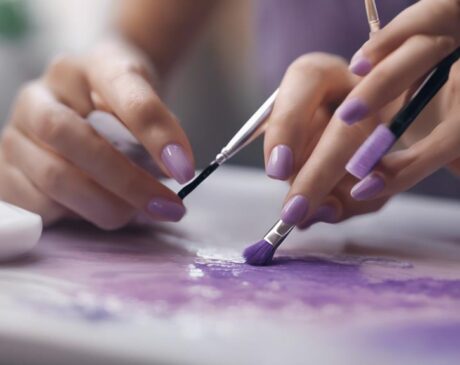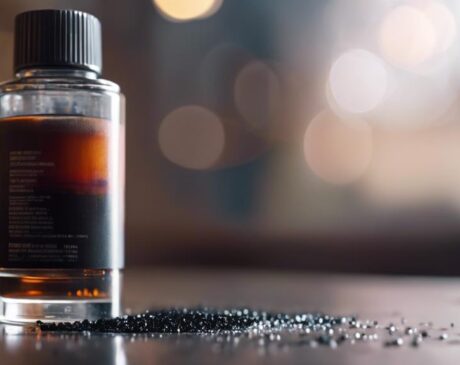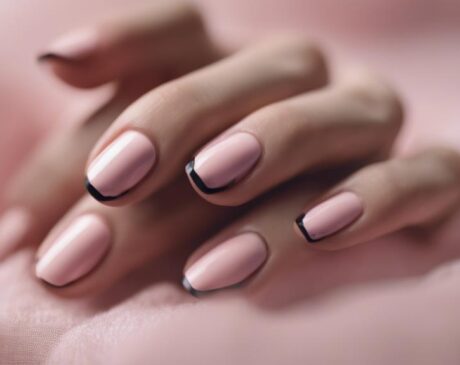Why Are Press on Nails Bad?
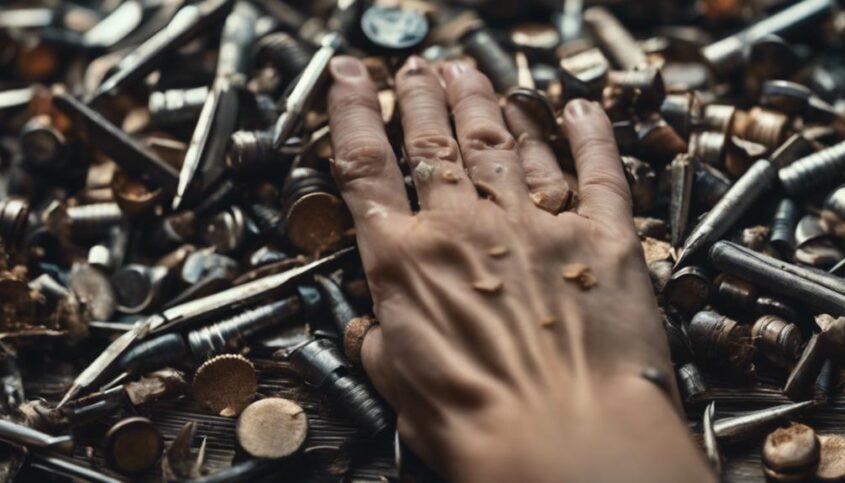
Press on nails can weaken natural nails and damage the nail bed due to the adhesive used. They increase the risk of nail bed infections, especially from bacteria, and can create a moist environment leading to fungal infections. Proper hygiene and maintenance are vital to prevent complications. Challenges like removing adhesive residue and allergic reactions to nail glue are common. Overall, press on nails may impact your nail health negatively. Consider the risks before use.
Key Takeaways
- Press on nails can weaken natural nails and make them brittle.
- Risk of nail bed infections due to bacteria entering through tiny openings.
- Fungal infections can occur with poor nail hygiene and damaged nail beds.
- Adhesive residue removal challenges can result in damage if not done carefully.
- Allergic reactions to nail glue can lead to skin irritation and dermatitis.
Potential Damage to Natural Nails
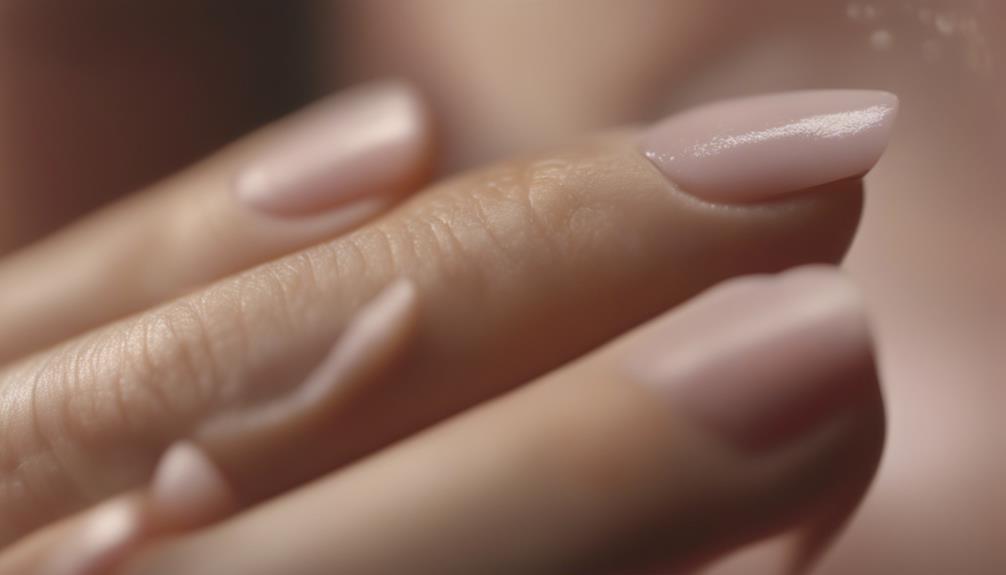
When considering press on nails, one must be mindful of the potential damage they can cause to natural nails. While press on nails offer convenience and versatility, frequent and improper use can lead to weakened and brittle natural nails. The adhesive used to attach press on nails can strip away the top layers of the nail bed, leaving them vulnerable to breakage and thinning.
Innovations in press on nail technology have led to formulas that are gentler on natural nails, but it is essential to exercise caution when applying and removing them. Avoiding harsh chemicals and opting for quality press on nails can help mitigate the risk of damage to the natural nail.
It is crucial to give the nails a break between applications to allow them to breathe and recover. Utilizing nourishing nail treatments and maintaining good nail hygiene can also help support the health of natural nails. By staying informed and making mindful choices, one can enjoy the benefits of press on nails without sacrificing the health of their natural nails.
Risk of Nail Bed Infections
Nail bed infections pose a significant risk when using press-on nails, as they can introduce bacteria and increase the likelihood of fungal infections. Proper hygiene practices are crucial in preventing these infections, emphasizing the importance of maintaining clean nails and tools to reduce the risk of complications. Understanding the potential for nail bed infections highlights the need for vigilance and care when using press-on nails to protect the health of natural nails.
Nail Bed Bacteria
The presence of bacteria in the nail bed poses a significant risk of developing infections. Nail bed bacteria can enter through tiny openings or cuts around the nail, leading to redness, swelling, and pus formation. These bacteria thrive in the warm and moist environment created by press on nails, increasing the likelihood of infection. Staphylococcus aureus and Pseudomonas aeruginosa are common bacteria found in nail infections that can cause serious health complications if left untreated. To mitigate this risk, it is crucial to maintain proper nail hygiene, regularly clean and disinfect nails, and avoid wearing press on nails for prolonged periods. By staying vigilant about nail bed bacteria, individuals can protect their overall nail health and prevent potentially harmful infections.
Fungal Nail Infections
Fungal nail infections present a notable risk for developing nail bed infections due to their ability to penetrate and compromise the nail structure. These infections can lead to serious complications if left untreated, highlighting the importance of proper nail care and hygiene practices. To provide a clearer understanding, consider the table below:
| Risk Factors | Prevention | Treatment | Complications |
|---|---|---|---|
| Poor nail hygiene | Regular nail cleaning | Antifungal medications | Spread to other nails |
| Damaged nail beds | Proper nail trimming | Laser therapy | Skin irritation around the nail |
| Sharing nail tools | Avoiding nail trauma | Surgical nail removal | Permanent nail damage |
Taking proactive measures to prevent fungal nail infections is crucial for maintaining optimal nail health and overall well-being.
Hygiene Practices Importance
Maintaining proper hygiene practices is essential to minimize the risk of nail bed infections. When using press-on nails, it is crucial to prioritize cleanliness to prevent harmful bacteria from infiltrating the nail bed. Regularly washing and drying your hands before applying press-on nails can significantly reduce the chances of infection. Additionally, ensuring that the nails and surrounding skin are clean and dry before application is vital. Avoiding prolonged wear of press-on nails and giving your natural nails time to breathe can also aid in preventing infections. By incorporating these hygiene practices into your nail care routine, you can enjoy the beauty of press-on nails without compromising the health of your nail beds.
Adhesive Residue Removal Challenges
When it comes to the challenges of removing adhesive residue from press-on nails, individuals often face difficulties in finding effective removal methods. The process of getting rid of residue can potentially lead to damage to the natural nails if not done carefully. Additionally, the time-consuming nature of the removal process can be a significant drawback for those seeking a quick and easy nail enhancement solution.
Residue Removal Methods
Effective removal of adhesive residue from press on nails is essential for maintaining the health and appearance of natural nails. When tackling this challenge, innovative methods can make the process more efficient and gentle on your nails. Here are three advanced techniques to consider:
- Oil Soak: Soaking your press on nails in warm oil, such as coconut or olive oil, can help break down the adhesive residue without damaging your natural nails.
- Acetone-Free Remover: Opting for acetone-free nail polish remover can effectively dissolve the adhesive residue while being gentler on your nails.
- Gentle Buffing: Using a soft buffing block can help remove stubborn residue without causing excessive damage to the nail surface.
Damage to Nails
Challenges arise when removing adhesive residue from press on nails, potentially leading to damage to the natural nails if not done carefully and effectively. The strong adhesives used in press on nails can leave behind stubborn residue that is challenging to remove without causing harm to the natural nail bed. Traditional removal methods like soaking in acetone or forcefully peeling off the press on nails can strip the nail of its natural oils and weaken its structure. Innovative solutions such as using adhesive removal pads or gentle nail polish removers specifically formulated for press on nails can help minimize damage. It is essential to prioritize nail health and choose removal techniques that are gentle yet effective to prevent long-term damage.
Time-Consuming Removal Process
As the process of removing adhesive residue from press on nails can be time-consuming and meticulous, it is important to approach it with care and attention to detail. The following are key challenges faced during the removal process:
- Residue Persistence: Adhesive residue can stubbornly cling to the nail, requiring thorough removal techniques.
- Potential Nail Damage: Vigorous scraping to remove residue can damage the natural nail bed if not done carefully.
- Time Investment: Due to the meticulous nature of residue removal, the process can be time-consuming, requiring patience and precision.
Efficient removal methods and gentle care are essential to minimize the potential drawbacks associated with the time-consuming removal process of press on nails.
Hindrance in Natural Nail Growth
The prolonged use of press on nails can impede the natural growth process of nails. While these artificial nails offer a quick and convenient way to achieve trendy designs, they can cause damage to the natural nail bed. Press on nails, when consistently applied for extended periods, create a barrier that prevents the nails from receiving essential nutrients and moisture. This barrier can weaken the natural nails, making them prone to breakage and hindering their growth potential.
Constantly wearing press on nails can also lead to the nails becoming thinner and more brittle over time. The adhesives used to attach press on nails can be harsh on the nail plates, causing them to become dehydrated and more susceptible to damage. Additionally, the pressure from the press on nails can restrict blood flow to the nail bed, further impeding the natural growth process.
To maintain healthy nails, it is advisable to give the nails regular breaks from press on nails and ensure proper hydration and nourishment to promote natural nail growth and strength.
Allergic Reactions to Nail Glue
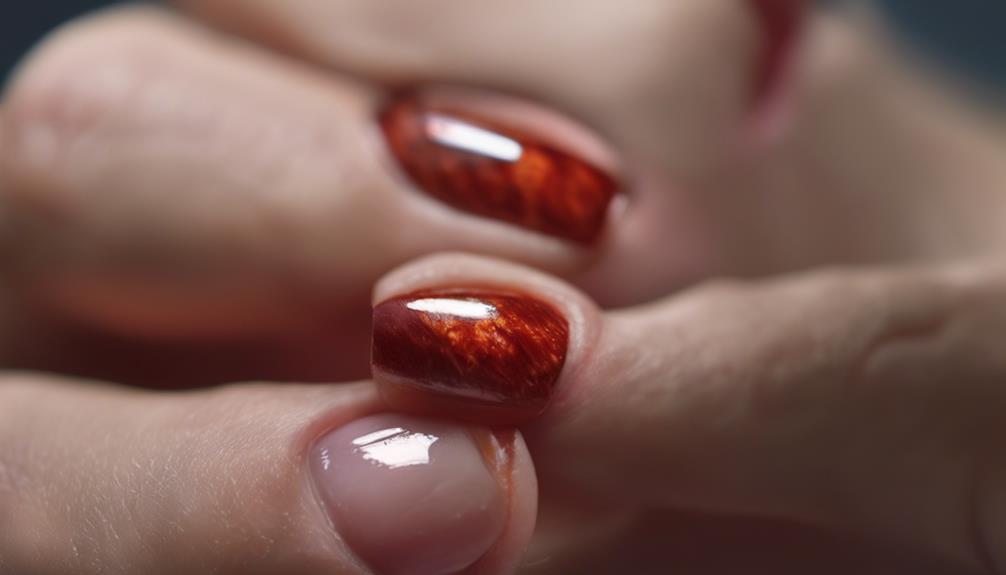
Experiencing allergic reactions to nail glue is a common concern among individuals who frequently use press on nails. The adhesive used to attach press on nails can contain chemicals that some people may be sensitive to, leading to various allergic reactions. Here are three key points to consider regarding allergic reactions to nail glue:
- Skin Irritation: Allergic reactions to nail glue can manifest as redness, itching, or swelling around the nail area. This irritation can be uncomfortable and may worsen if the glue is not removed promptly.
- Contact Dermatitis: Some individuals may develop contact dermatitis, a skin condition characterized by a rash or blisters, upon contact with nail glue. This reaction can be painful and may require medical attention to alleviate symptoms.
- Chemical Sensitivities: Nail glue often contains chemicals like formaldehyde or toluene, which can trigger allergic responses in sensitive individuals. It is essential to be aware of the ingredients in nail glue products to avoid potential allergic reactions.
Difficulty in Proper Nail Maintenance
Maintaining the longevity and appearance of press on nails can pose challenges for individuals seeking to uphold a polished and well-kept manicure. One of the primary difficulties in proper nail maintenance with press on nails is the risk of them popping off or lifting prematurely. This can occur due to factors such as improper application, exposure to water for extended periods, or engaging in activities that put pressure on the nails. Additionally, the need for regular upkeep to address any lifting or gaps that may occur can be time-consuming and frustrating for those who prefer a low-maintenance nail care routine.
To further understand the challenges faced in maintaining press on nails, let's explore the following table that highlights common issues and potential solutions:
| Issue | Solution |
|---|---|
| Popping off prematurely | Proper application techniques |
| Lifting at the edges | Secure with additional adhesive |
| Water exposure | Wear gloves during water activities |
| Nail gaps | Fill in gaps with nail glue |
| Time-consuming upkeep | Schedule regular nail maintenance |
Impact on Overall Nail Health
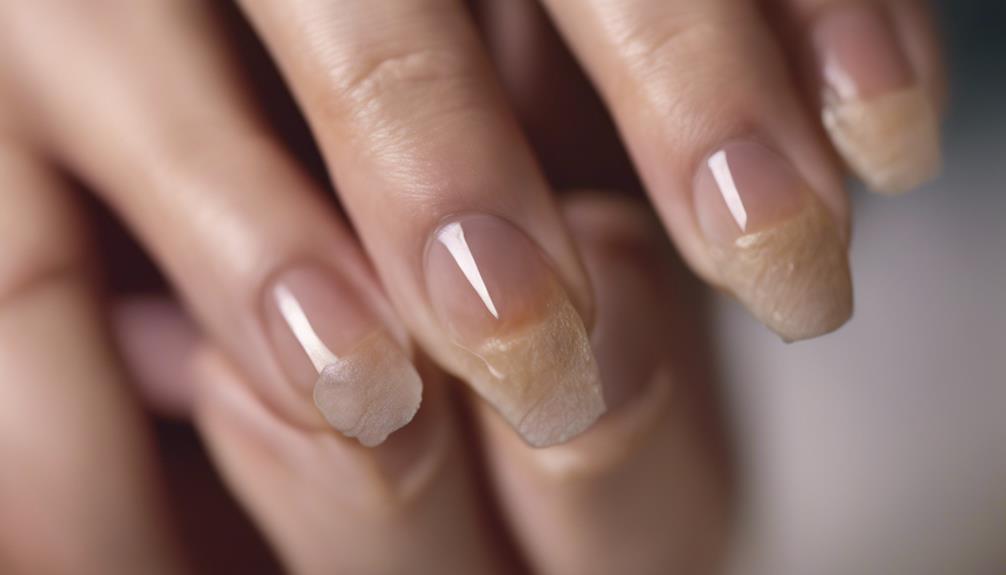
As individuals increasingly turn to press on nails for convenience and style, it is essential to consider their potential impact on overall nail health. While press on nails offer a quick and easy way to achieve a manicured look, they can have consequences for the health of your natural nails. Here are three key ways press on nails can affect overall nail health:
- Weakening of Natural Nails: The application and removal of press on nails can weaken the natural nail bed over time. The adhesives used and the pressure from frequent application and removal can lead to brittleness and breakage of your own nails.
- Risk of Infections: Improper application or wearing press on nails for extended periods can create a moist environment between the artificial and natural nail, potentially leading to fungal or bacterial infections.
- Lack of Oxygen: Constant wear of press on nails can restrict airflow to the natural nail, depriving it of essential oxygen and nutrients, which are vital for maintaining healthy nail growth and strength.
Frequently Asked Questions
Can Press on Nails Be Reused Multiple Times or Are They Single-Use Only?
Press on nails can be reused multiple times depending on the quality and application method. Proper removal and storage can extend their lifespan. However, frequent use may compromise adhesion and appearance over time.
Are There Any Long-Term Effects on the Nail Bed From Regularly Using Press on Nails?
Do press on nails have long-term effects on the nail bed? Regular use of press on nails can potentially weaken the nail bed, causing brittleness and damage. It's crucial to allow nails to breathe and recover between applications.
How Can I Prevent Adhesive Residue From Building up on My Natural Nails When Using Press on Nails?
To prevent adhesive residue buildup on natural nails when using press-on nails, thoroughly clean nails with rubbing alcohol before application. Ensure the nail surface is dry and oil-free. Apply a thin layer of adhesive and press nails firmly for secure attachment, facilitating easier removal later.
Are There Any Specific Vitamins or Treatments That Can Help Promote Natural Nail Growth While Using Press on Nails?
Looking to enhance natural nail growth alongside press-on nails? Explore biotin supplements, keratin treatments, and nail-strengthening formulas for optimal support. Nourish from within and reinforce externally for a balanced approach to nail care.
Is There a Way to Test for Potential Allergic Reactions to Nail Glue Before Applying Press on Nails?
To test for potential allergic reactions to nail glue before applying press on nails, consider conducting a patch test on a small area of skin. Apply a small amount of the glue and observe for any adverse reactions such as redness, itching, or irritation.

